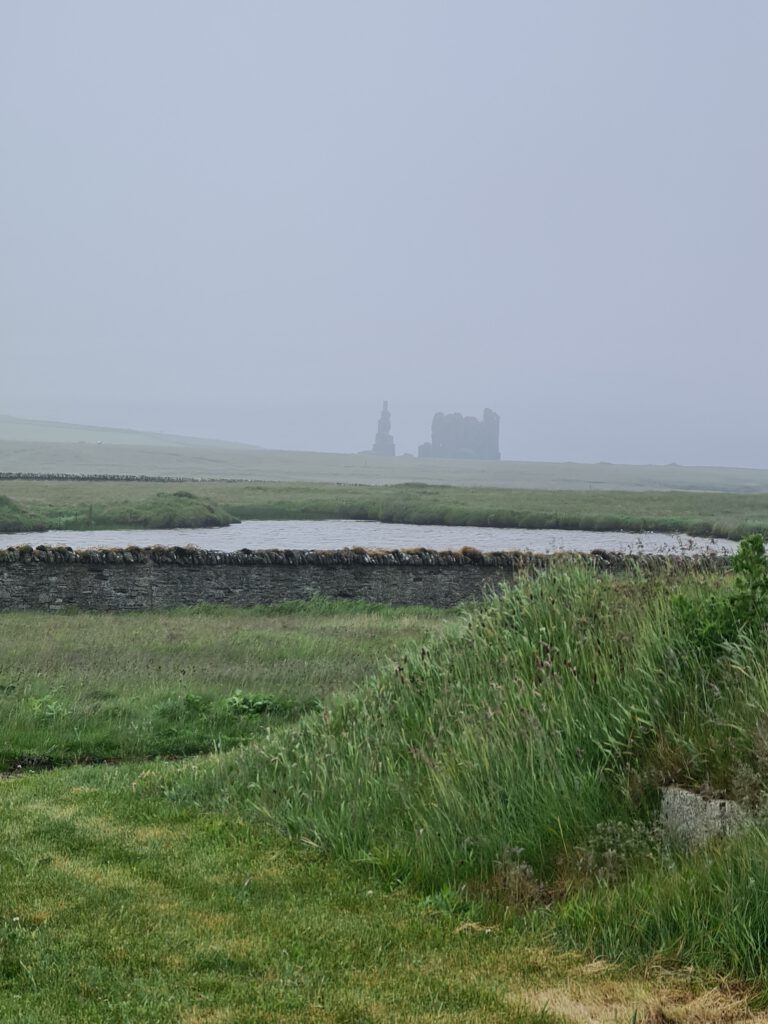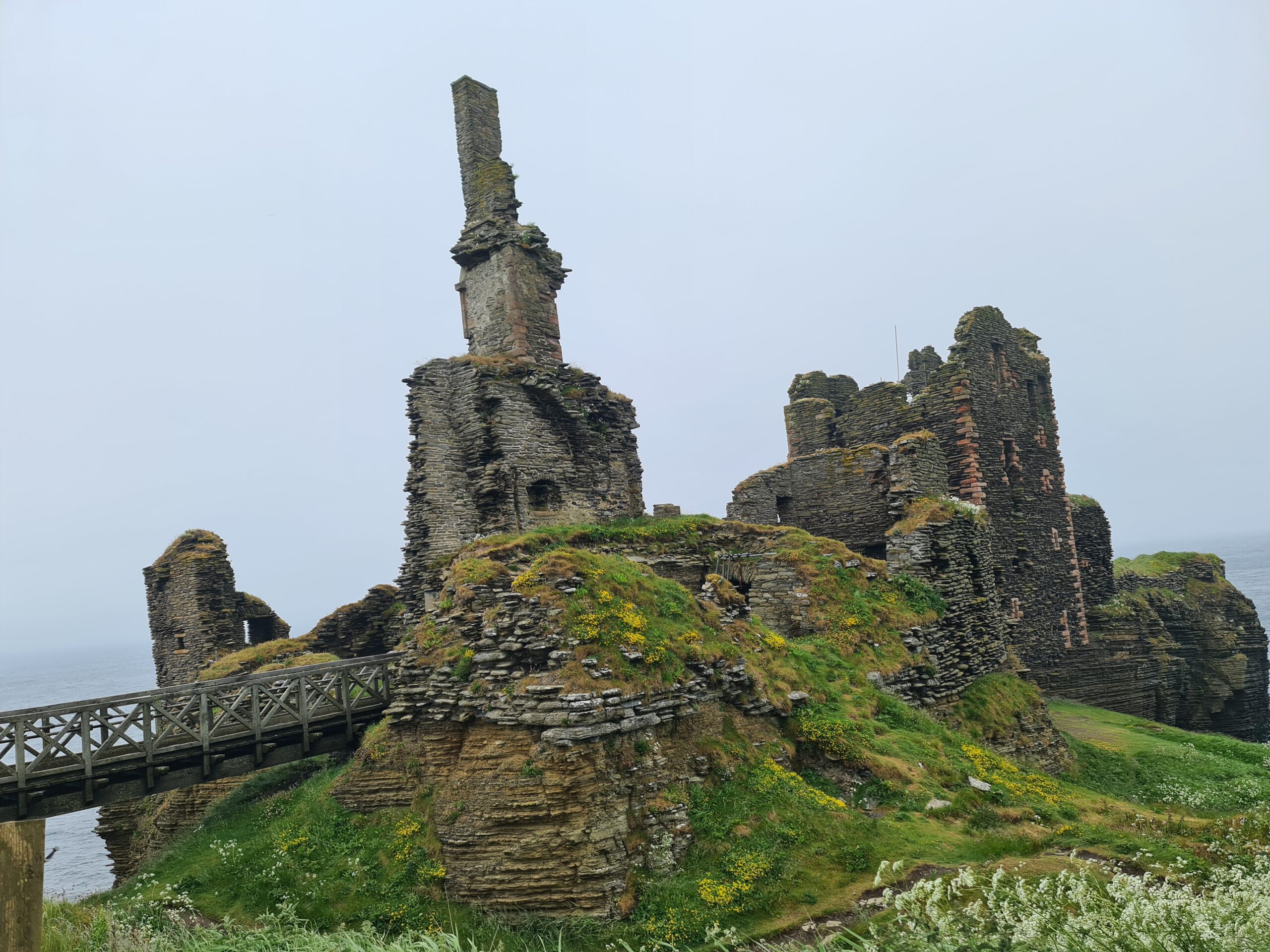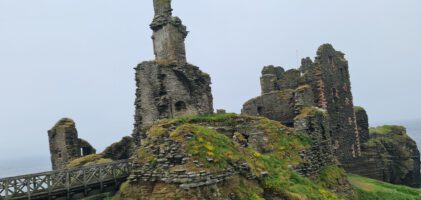Location: 3 miles north of Wick, past Staxigoe, Wick, Caithness, Highlands of Scotland
kind of castle: largely extended L-plan tower house
today: partially open to the public, ruined status (might be closed for conservation work)
public transport: buses from Wick to Staxigoe, or about 1 hour of a walk (from Staxigoe still about half an hour of a walk)
scheduled monument: yes
managed by: Clan Sinclair Trust / Sinclair Castle Trust
entrance fee: £ 0
opening times: 24/7 (exterior views always, interior might be closed for conservation work at times)
directions: Castle Sinclair Girnigoe – Google Maps
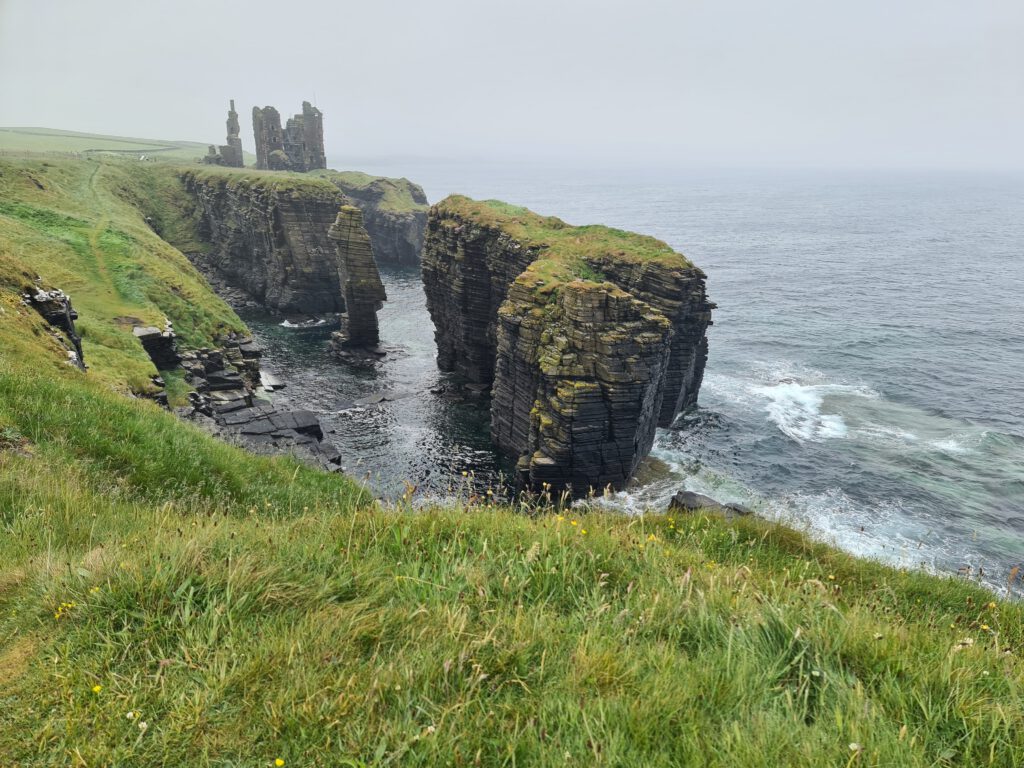
Far up in the north of Scotland lies Castle Sinclair Girnigoe, a castle attracting many theories, some of them proven wrong by now but others lost in legend or history. With the dramatic coastal scenery of the east coast of Scotland, especially up around Wick, Castle Sinclair Girnigoe is within the region of Caithness and saying this goes with the knowledge of this more than just amazing coastline, making for stormy nights in the castle, something out a movie.
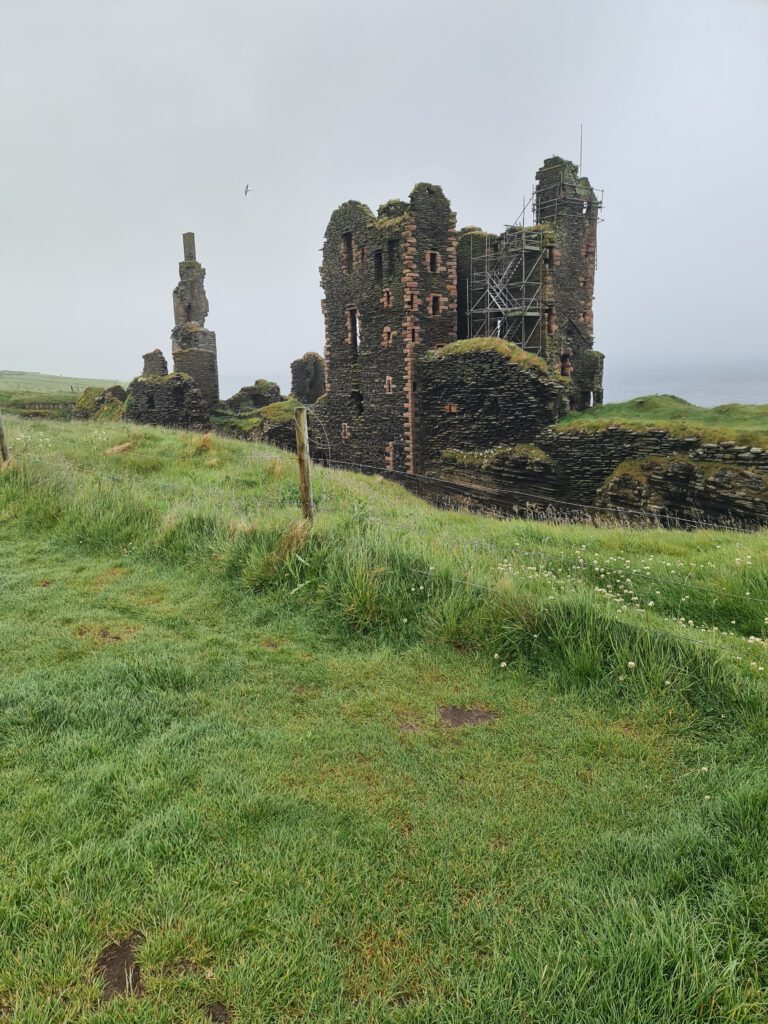
Once thought to have been one of the earliest strongholds of the Sinclairs it was built in the late 1400s and was feared by the foes of the Earls of Caithness, by whose 2nd Earl, William Sinclair, it is thought to have been erected between 1476 and 1496. This being said, the older part of the castle was formerly referred to as Castle Girnigoe and while dating back to the 15th century, the more recent castle part, for a time referred to as castle Sinclair dates to the 17th century. Those two castle parts were for quite some centuries believed to have been two separate castles united on some point in history, to form one big castle complex, referred to as Castle Sinclair Girnigoe, however, there was always just one castle, extended over time but always just one!

Sadly, only used between the 14th and 17th century the castle was left in destruction after battle and alongside with the forces of nature so close to the shores there is no wonder that what we can still see today is only a fraction of what the castle once was. Thankful to the 14th century typical stone castles though we can at least something today, and not just a mote like from a lot of forgotten places.

Dying at the Battle of Flodden it was William Sinclair, the 2nd Earl of Caithness who built the part of the ruin called Castle Girnigoe, probably on the foundation of something much older structure and with the location there might have been a structure going far further back than anyone can imagine.

The third Earl only lived 16 years, before being slain in battle on Orkney in 1529, under his reign there was less to know than what went on under the 4th Earl, George. In 1571 the Master of Caithness, John, George’s son, and heir, was imprisoned by his own father, spending seven years in Castle Girnigoe. Cruel enough to put your own son in the dungeons because you have the suspicion of a rebellion, but to top it of George killed his own son by having him fed with salted beef, not providing any liquid. Dying insane from thirst, planning to rebel against his father or not, no one deserves such a cruel death, but those were the times and so the Master of Girnigoe died.
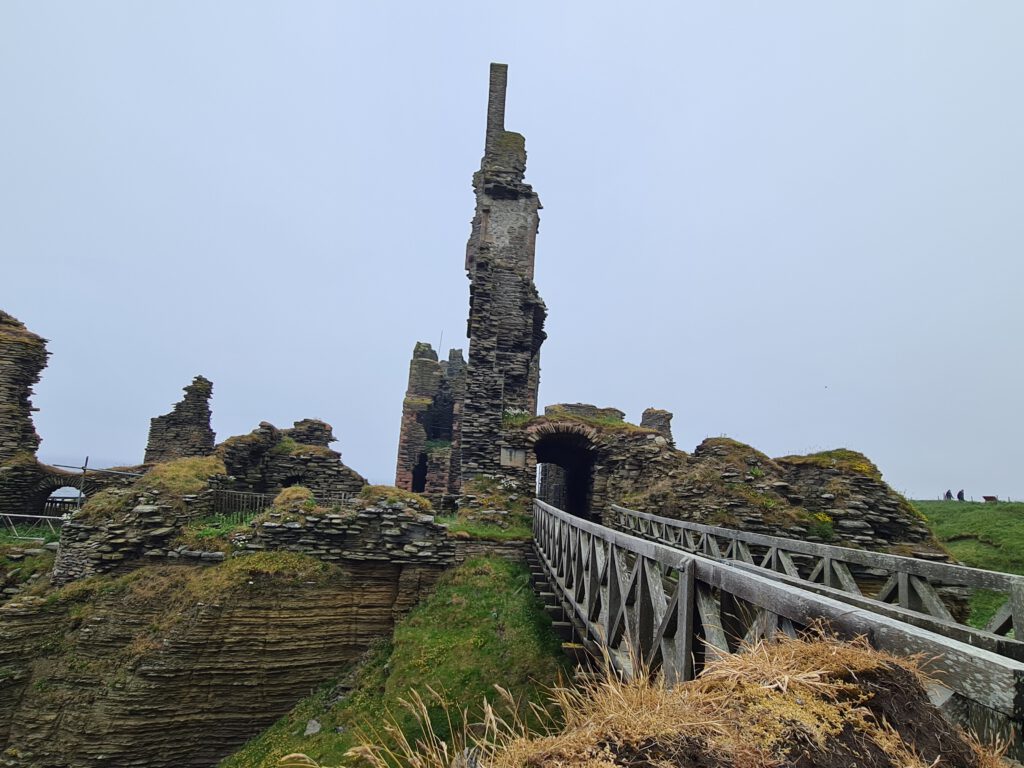
Although being unsuccessful there is another even under the 5th Earl rule that should be mentioned, he was the Earl that tried to seize the earldom of Sutherland, including places such as Dunrobin Castle, Helmsdale Castle and Dornoch Palace. Not stated clearly but most likely under the rule of George Sinclair, the 5th Earl of Caithness the infamous Earl of Bothwell, lover of Mary Queen of Scots, lord of Hermitage Castle and by 1594 rebel, was at the castle in December of 1594.
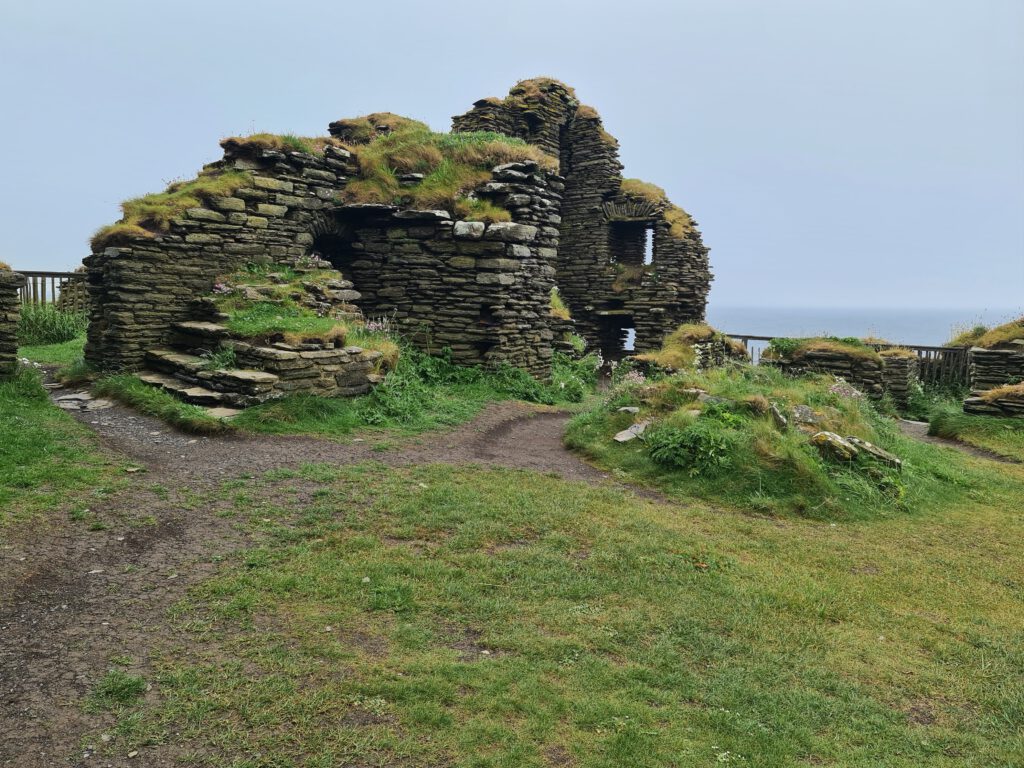
It was also the 5th Earl who not just extended the castle in 1606 by building what became known as Castle Sinclair, connected to Castle Girnigoe by a draw bridge, but also tried to change the name of the whole complex to Castle Sinclair, the request to the Scottish Parliament must have led to some sort of confusion or the documentation simply wasn’t sufficient. However, in 1700 both names had been written down and so they both have been used ever since.
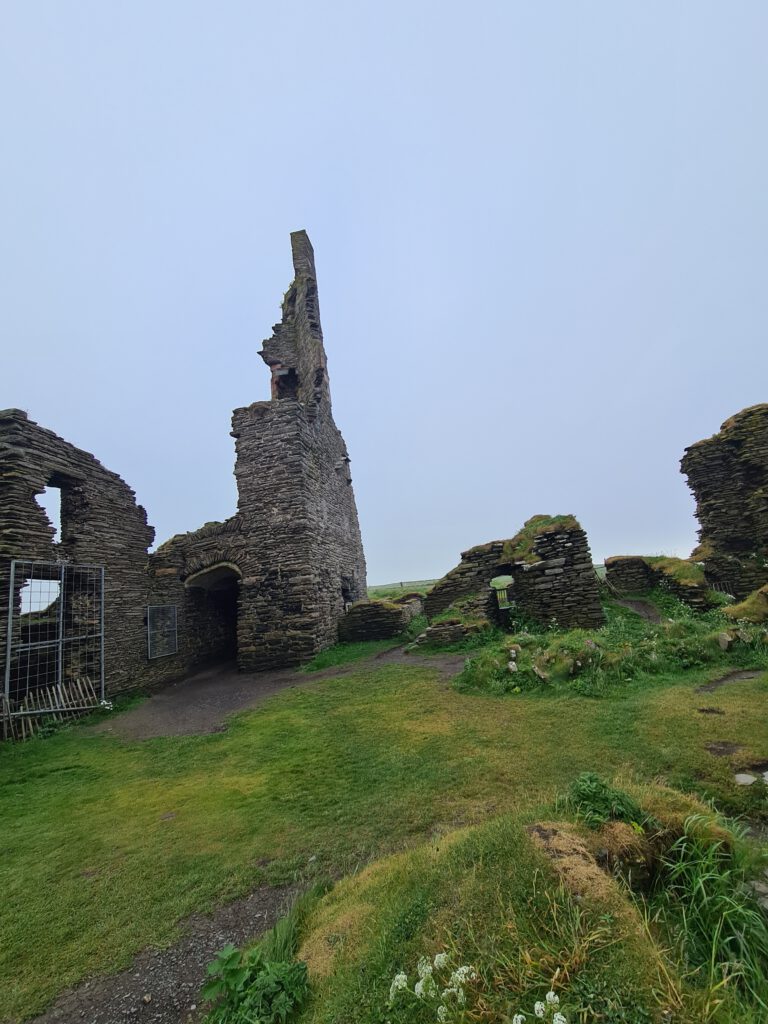
It is hard to argue with the fact that a lot regarding the structure we see today happened with George Sinclair the 5th Earl of Caithness, his heir, again a George (popular name with the Sinclair’s as it seems), 6th Earl of Caithness was only responsible with the downfall of Castle Sinclair Girnigoe. Creating huge debts with Campbell of Glenorchy, his lands were soon claimed by said Campbell and with the lands, the Earldom as well. All this led to a siege of Sinclair Girnigoe in 1679, although not by the Campbells, another party claiming the Earldom got involved, George Sinclair of Keiss. He captured the castle complex, with the extensions by the 5th Earl, less of a defensive tower but more of a harder to defend castle complex, used to demonstrate wealth rather than defence. It has to be mentioned that all this mess occurred partly because the 6th Earl died not only with heavy debt but also without an heir, in 1676.
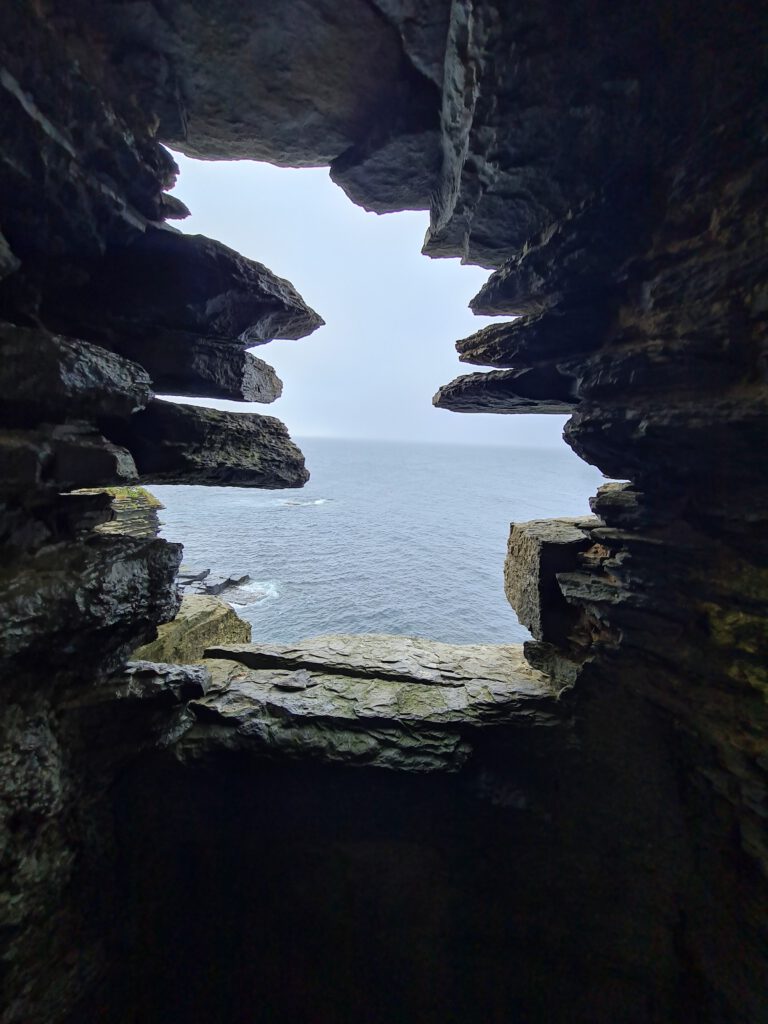
Campbell took the death of the Earl to wed his widow, claiming the title of Earl of Caithness. With Campbell being a 4th cousin of the dead Earl, he had some claim for sure, however, Sinclair of Keiss was a 1st cousin and so his claim would have been stronger in the succession. But those times were different and so a lot of fighting and some bloody massacres occurred.
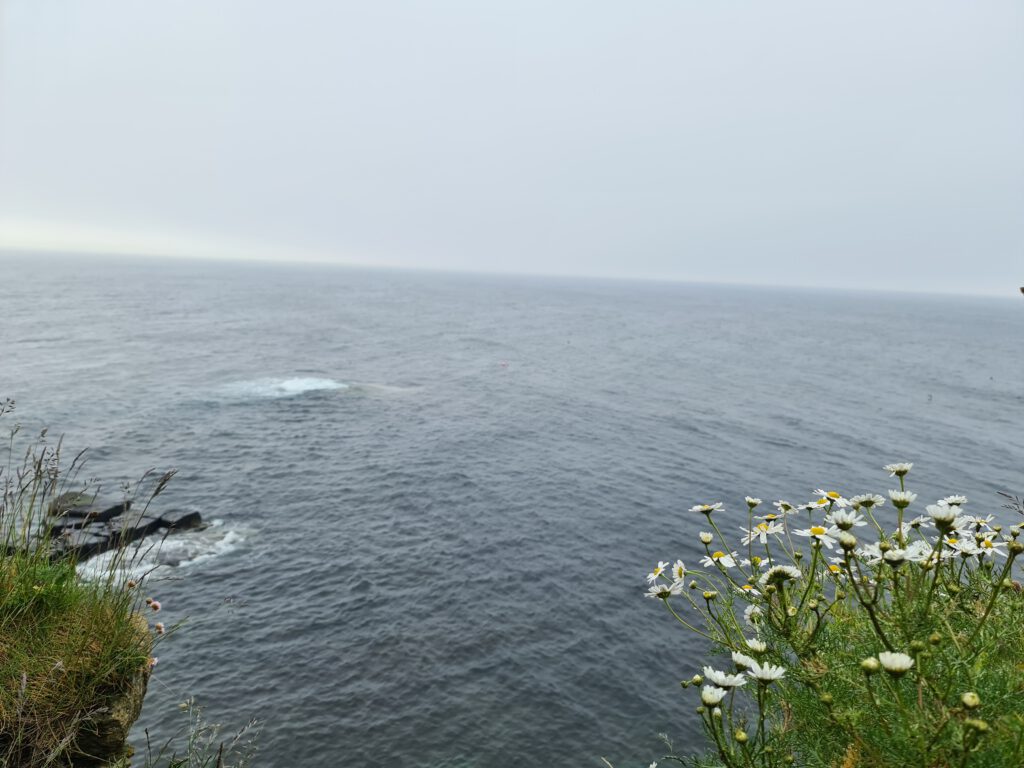
One of those battles being the Battle of Altimarlach in which the Sinclairs were slaughtered by the Campbells, in 1680. But the Sinclairs didn’t give up, not even after the harsh outcome of the Battle of Altimarlach, which was indeed very cruel, in fact it was reported that the Sinclairs were slain in a number that allowed the Campbells to cross the river without getting their feet wet in the slightest.
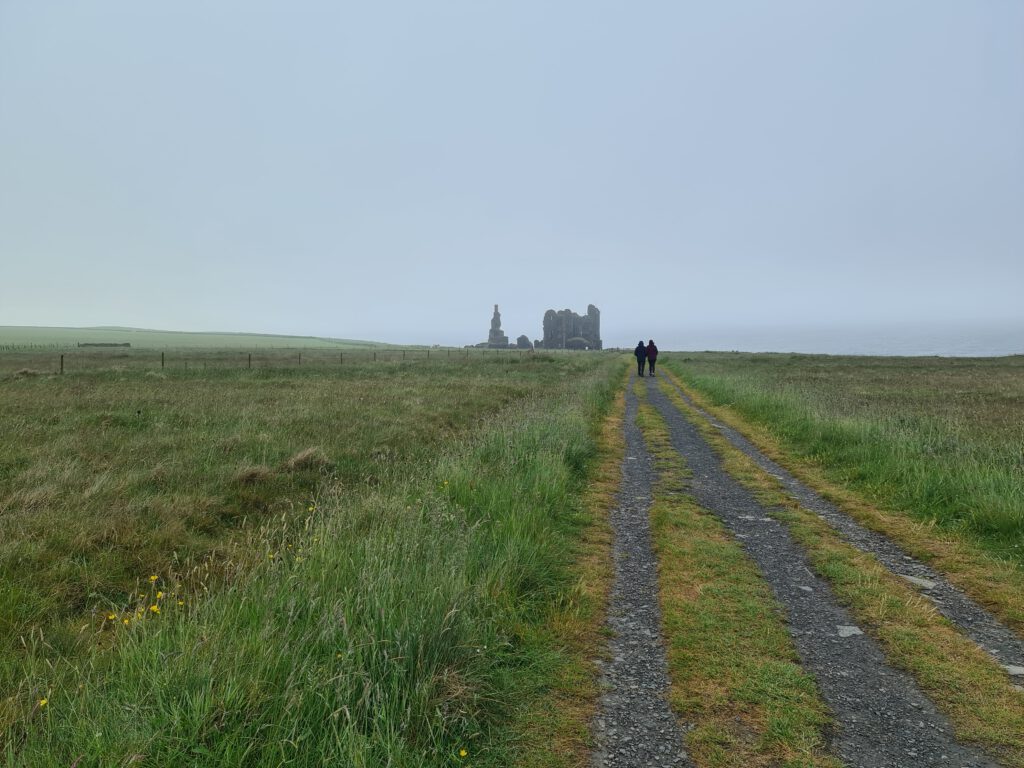
George Sinclair of Keiss (you can spot the castle in the distance when looking north from Castle Sinclair Girnigoe) laid siege on the castle and captured it, he and his friend were declared rebels following the attack. With a lot of luck and clever allies George managed to get back into favour and instead of further fighting he decided to use politics to achieve his goal of becoming the next Earl of Caithness.
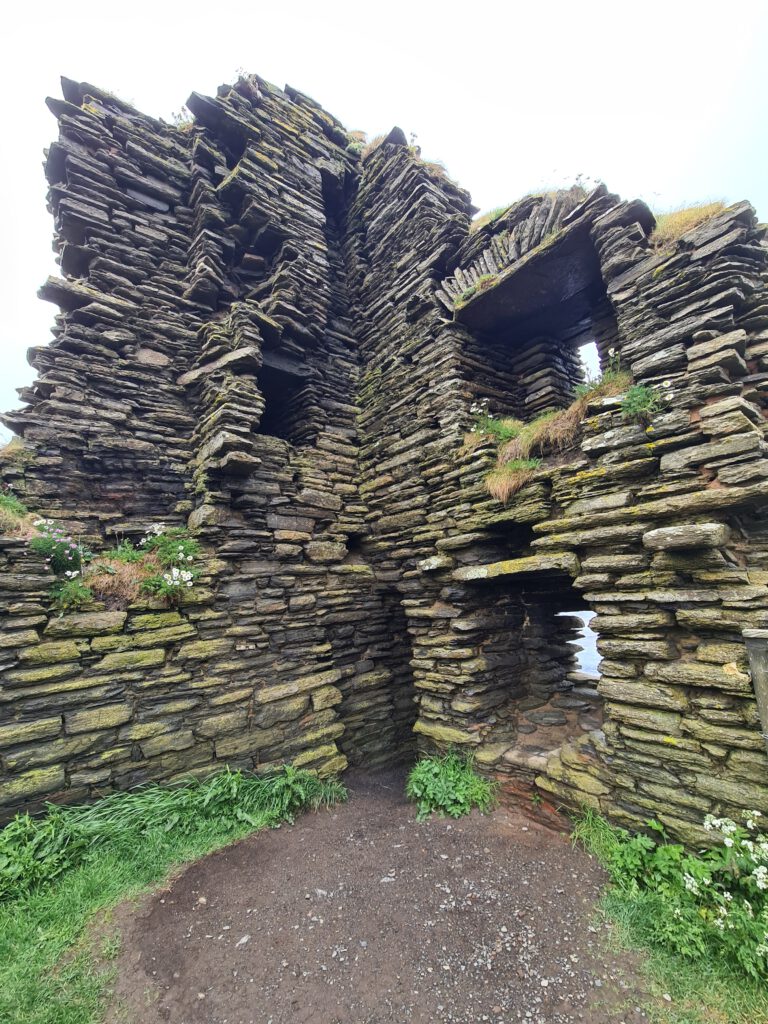
Having the influential and later King James II, Duke of York at the time, at his side, he finally became the 7th Earl of Caithness in July 1681 almost five years after the 6th Earl’s death, the feuding finally came to an end, the Campbells being compensated with the Earldom of Breadalbane. Although a good end in regard to people’s lives being saved due to no more fighting, the castle had suffered very bad under all the attacks and sieges and was damaged to a degree that the 7th Earl decided not to rebuild or use the castle in any way from then onwards.
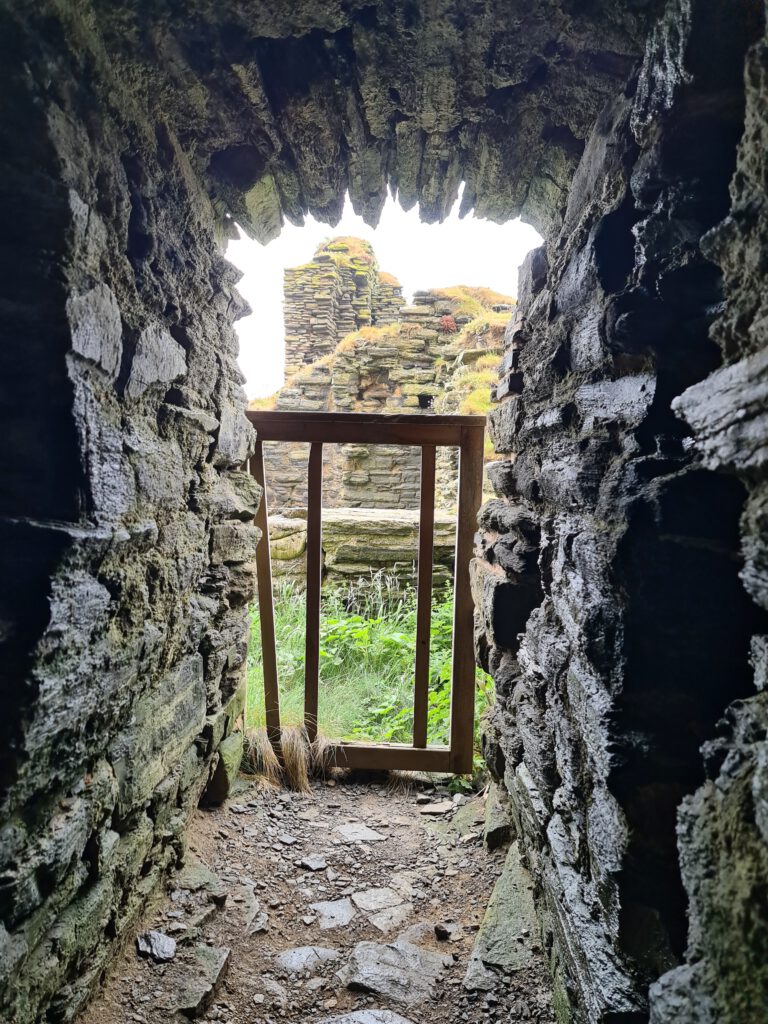
During the following centuries the castle ruin passed into the hands of the Dunbars of Hempriggs only being sold back to the Sinclairs around 1950. It took another couple of years before the Clan Sinclair Trust held the castle, carrying out research on an archaeological base, trying to preserve the castle and keeping it accessible for generations to come. The now King Charles (as of 2023) being a patron of the Clan Sinclair Trust.
Castle Sinclair Girnigoe is the only castle in all of Scotland that is listed by the World Monuments Fund alongside being a listed historical building. These days the Earls of Caithness don’t even live in Caithness anymore, they moved down to Oxforshire, England.
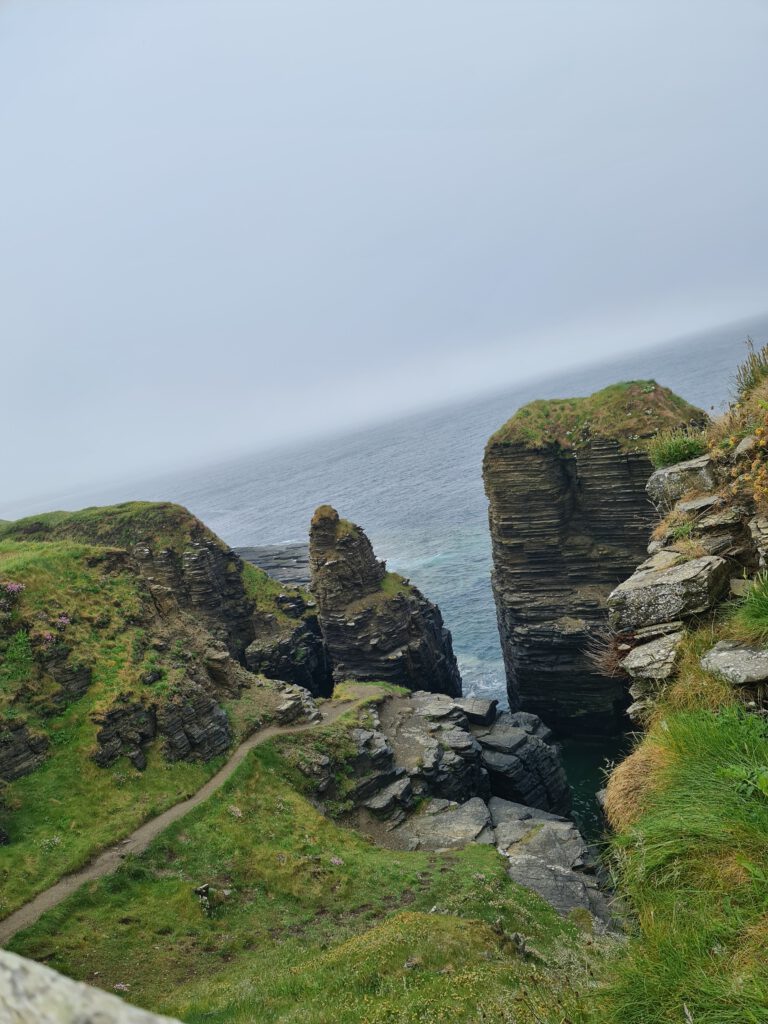
Now roofless, mysterious and most definitely in a very dramatic setting (especially with high waves far down below the castle) Castle Sinclair Girnigoe deserves a visit, spending some time also exploring the surrounding area with amazing views of the castle and some of the most stunning coastal scenery you can find. Try to spot not only seals but maybe even some dolphins or whales the sea below. Surrounded by the sea on either side the castle offers so many great opportunities for a nice shot and makes you imagine what once was here, what sort of purpose the site had for the Neolithic people and the strategic defence it built for the Earls of Orkney and Caithness, guarding the way up to the Pentland Firth, in many ways also guarding the coast of Scotland from invasion.
Make sure to plan in plenty of time when visiting, exploring everything offered by the area, one way to do so is also the Castle Sinclair and Noss Head route or following the John O’Groats Trail from Wick.
